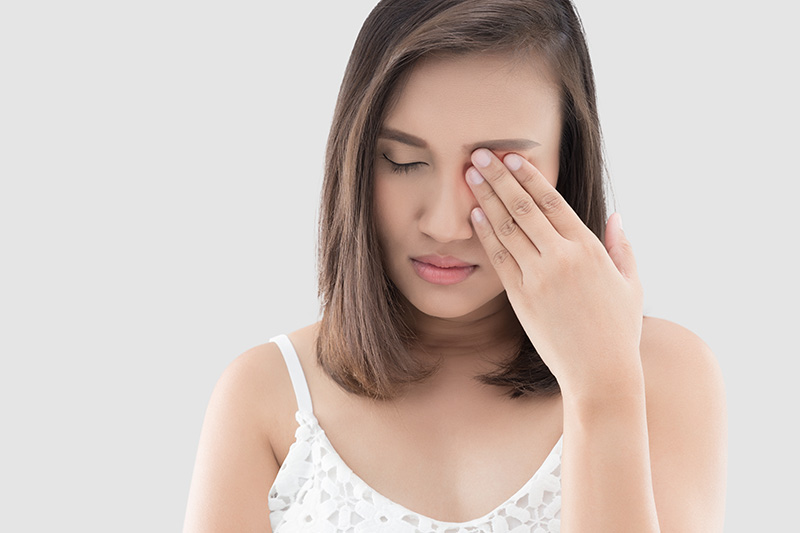Common eye problems
Our eyesight is the most valuable assets in the human body. Because maintaining the health of the eyes is so important, here are the most common eye problems
Cataracts
Cataracts are marked by a blurry, milky white lens in the eye, most cataracts are age-related and are more common in people over the age of 50 (but can occur at any age).
Treatment: Luckily, cataracts are a common eye condition that can be cured with surgery. If surgery is required depends on the degree of vision impairment and how it affects the quality of life and the person’s ability to work.
Diabetic Retinopathy
Diabetic retinopathy occurs as a result of chronically elevated blood sugar associated with type 1 and type 2 diabetes and may cause blindness if left untreated. Too much blood sugar will change the blood vessels in the back of the eye, preventing the retina from obtaining the correct amount of nutrients it requires to retain vision. Anyone with type 1 or type 2
diabetes has a high risk of developing diabetic retinopathy.
Treatment: In many cases, laser surgery can prevent a severe loss of vision associated with diabetic retinopathy. A procedure called laser photocoagulation may seal or destroy growing or leaking blood vessels in the retina.
Macular Degeneration
This major cause of blindness is characterized by damage to the macula, the area of the retina that is sensitive to light. Risk factors include age, smoking, gender, and family history.
Treatment: Age-related macular degeneration treatments may prevent severe vision loss or significantly slow the progression of the disease. There are several treatment options available, including:
- Anti-angiogenic drugs. These drugs are injected in the eyes and block the development of new blood vessels and the leakage of abnormal vessels in the eyes.
- Laser therapy. High-energy laser light is sometimes used to destroy the active growth of abnormal blood vessels.
- Photodynamic laser therapy. A two-step treatment that uses a light-sensitive drug to damage abnormal blood vessels.
- Vitamins C, E, beta-carotene, zinc and copper may reduce the risk of vision impairment in some people with intermediate to advanced dry age-related macular degeneration.
Refractive Errors
According to the National Eye Institute, refractive error is the most common cause of vision problems. Refraction occurs in the eye as the light passes through the cornea and lens.
Treatment: eyeglasses, contact lenses and surgery are the most common forms of treatment.
Glaucoma
Glaucoma is a disease that leads damage of the optic nerve of the eye and gets worse over time. It is associated with the build-up of pressure in the eyes; glaucoma tends to be inherited and might not appear until a later stage in life. Intraocular pressure (increased pressure), can damage the optic nerve that transmits images to the brain. If damage to the optic nerve continues due to high eye pressure, glaucoma will cause permanent loss of vision.
Treatment: Once it is detected, glaucoma can be treated with either surgery, lasers or eye drops.
Presbyopia
Presbyopia is a lack of ability to see near objects or tiny drawings. It is part of the natural ageing process of the eye, presbyopia is often confused with far-sightedness, but the two are not the same.
Treatment: Treatment options are wearing corrective lenses, undergoing refractive surgery or getting lens implants.
Floaters
Familiar to people over 50, floaters are tiny spots or specks that float across the field of vision. Shaped by a protein layer floating in the vitreous (a white, jelly-like material that fills the centre of the eye), the floaters appear to drift in front of the eye, but they do not obstruct vision.
Dry eyes
The disorder known as “dry eyes” occurs when tear glands cannot produce enough tears or produce tears of poor quality. Dry eyes can be painful, causing scratching, burning and, in extreme instances, some vision loss.
Treatment: The eye doctor may recommend using a humidifier in your house, unique eye drops that help simulate real tears, or plugs placed in tear ducts to reduce tear drainage.
Tearing
If your eyes produce too many tears, it could mean that your eyes are especially sensitive to changes in light, wind or temperature. Protecting your eyes by shielding or wearing sunglasses can sometimes solve the problem.
These common eye problems can be treated and cured or at least slowed if detected early by an eye care professional.
Visiting an eye doctor often helps one to ensure healthy vision for years to come.





